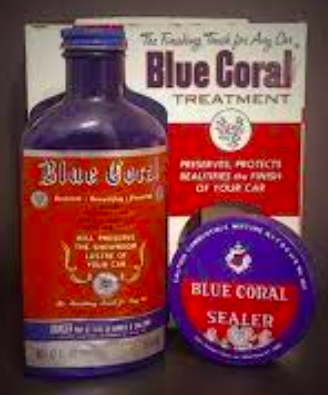George Simon created a car wax at the turn of the Twentieth century. They named the wax Simoniz, and it became a new word like Kleenex.
I like my cars to look good. My first car was black. Nothing looks better than a black car that has been washed and waxed. Unfortunately, black cars show dust. As a high school kid, I spent a lot of time keeping my car looking “sanitary.”
Early car paint didn’t have the durability of a modern clearcoat product. If you wanted a deep shine, it took elbow grease. Paint oxidized, and most car waxes had a cleaner in the wax. You removed a tiny bit of oxidized paint, leaving fresh paint. This step polished the car. The wax sealed the paint and kept it from turning dull.
In the 1960s, we spent a lot of time looking for the best “wax” to use. We didn’t mess with common, “Turtle Wax” like products. For a while, Blue Coral was touted as the best. The first step came in a bottle. This “polish” scoured off oxidized paint.

The second step was a sealer. If you got it right, it was beautiful. Getting an entire hood even was difficult and took hours. I remember one of Ruth’s cats jumping on the hood of our newly waxed car. That silly beast slid, squirming and pawing, off the other side.
Like my cars, I want my books to look good—read well. Nothing is finer than a polished book. Unfortunately, books don’t come with a modern clear coat to keep out errors. When writing a book, revising is like putting a fresh coat of paint on the pages, providing an excellent base.
But, car enthusiasts will tell you that the best paint job has tiny defects that must be polished. Polishing is what makes car paint or a book beautiful. Often, polishing starts with a coarse cutting compound that grinds off imperfections. Finer and finer polishes are applied until the finish is flawless.
Like polishing and waxing car paint, books require a multi—stage polish job. A few revisions will remove rough “orange peel” scenes so the reader’s eyes will glide over the pages. If the book has a good plot, this rough polish will create a book that is a pleasure to read. I look at my novels with the same critical eye I used to look at my Chevy’s paint. After those revisions, I see that the book needs a fine polish.
A fine polish is what wins attention at car shows and among book reviewers. This fine polish requires patience and hard work. My soon-to-be-released, The Ship from Wolfskill, is in the process of receiving a fine polish. Currently, test readers find very few rough “orange peel” sections. Upon closer inspection, minor imperfections can be found.
Willingness to do the last fine polish takes time and energy. I am incredibly fussy about the opening chapters and often fiddle with a single word, using the thesaurus, thinking of other novels to find the perfect word. Every word has definitions and connotations. Pulling a simple synonym from the thesaurus can create a disconnect for the reader. Each alternative must be weighed for style and sentiment to feel right in the passage. Detail work can distinguish between a gleaming vintage car ready for a car show and a new black SUV with “Wash Me” scrawled in the back window grime. I don’t want someone to write “Edit Me” on a review.
I am willing to put elbow grease into my books. How many passes through a finished novel are needed? Keep polishing it until it shines.
465 total views, 1 views today